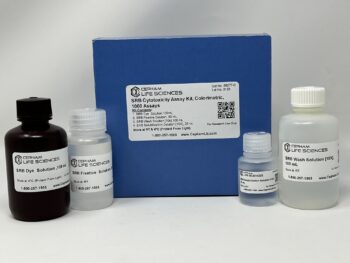Description
General Description
Acetylcholinesterase (AChE) is known to be one of the most important enzymes involved in neural responsiveness and overall functionality. Its main responsibility is breaking down acetylcholine (ACh), as a result forming acetic acid and choline. Used to stop synaptic transmission, AChE is often located near the central nervous system’s cholinergic synapses, as well as neuromuscular junctions.
AChE is located at the synaptic cleft and functions to terminate synaptic transmission by catalyzing the breakdown of ACh allowing cholinergic neurons to return to a resting state after activation. It is also found in membranes of red blood cells, motor and sensory fibers, muscles, nerves and central and peripheral tissues. Changes in AChE activity may result from exposure to certain insecticides, which act as cholinesterase inhibitors. Inhibitors of AChE are also used to treat certain conditions such as dementia.
Cepham Life Sciences provides a kit with sensitive detection of AChE activity. Cell extracts, blood samples, and other solutions can be analyzed for AChE activity, using DTNB to quantify thiocholine, a product of acetylthiocholine hydrolysis by AChE, reacts with 5,5′-dithiobis(2-nitrobenzoic acid) to form an colorimetric (412 nm) product, proportional to the AChE activity present. To directly measure the level of AChE activity, the production of thiocholine is determined by observing the DTNB absorption intensity. One unit of AChE is the amount of enzyme that catalyzes the production of 1.0 μmole of thiocholine per minute at room temperature at pH 7.5.
Application:
Acetylcholinesterase activity assay kit has been used to determine the activity of acetylcholinesterase in a rat organophosphate model, and in brain tissue homogenates.
Additional information
| Size | 100 Assays, 200 Assays |
|---|





